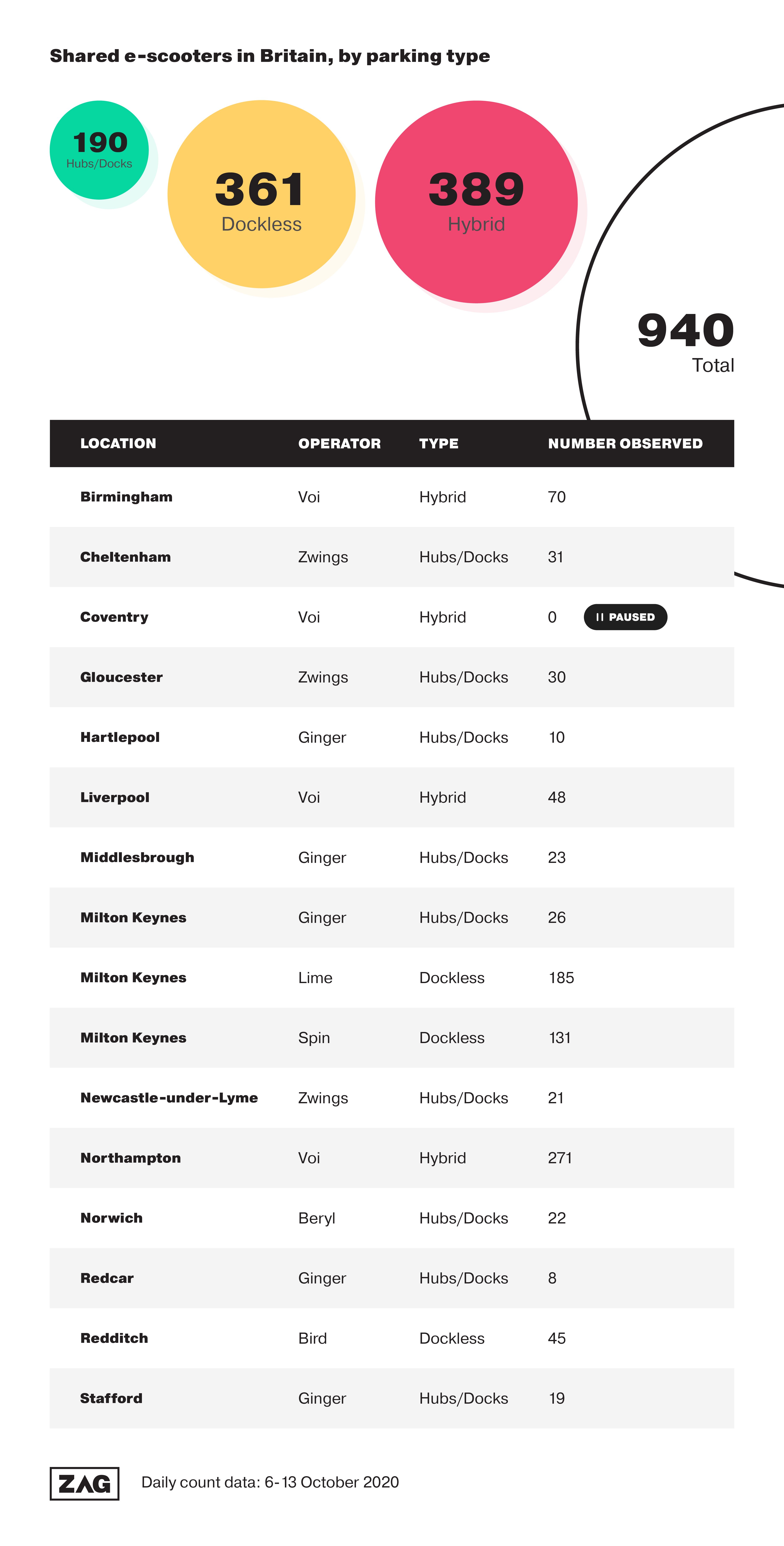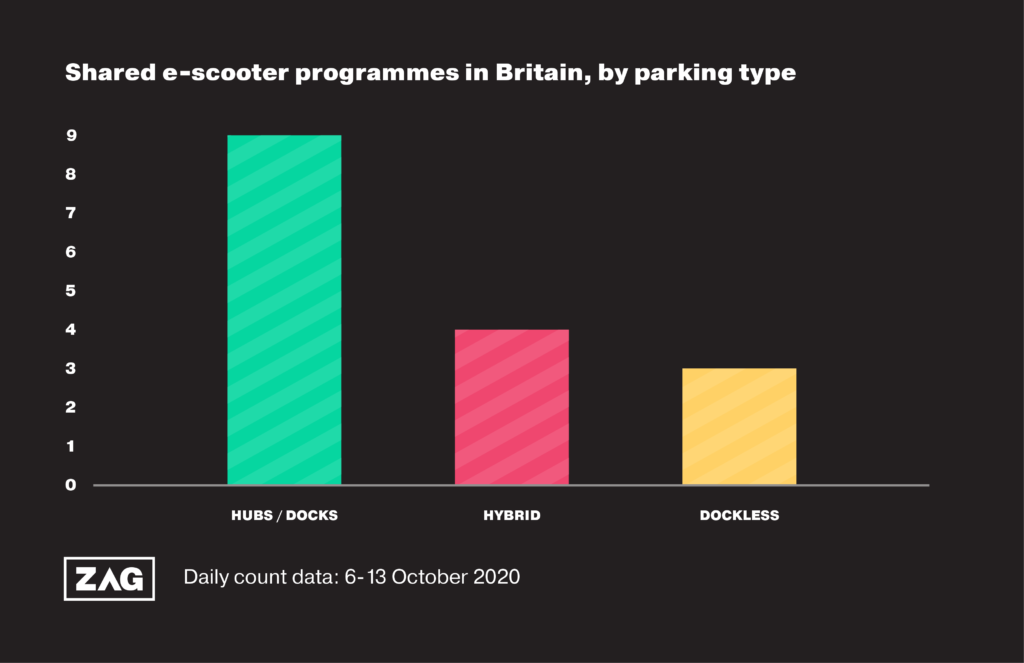E-scooter share has well and truly landed in the UK. Towns and cities are getting the tiny wheelers left, right and centre. But many operators are keeping fleets small as they tackle the early adoption and education phase, and as industry and communities learn from each other.
The total fleet size across England is around 900 in total, as far as we can verify, for the week 6 to 13 October 2020.


Parking definitions
We had a lively team discussion about the difference between hubs and docks. (Yes, we lead exciting lives.)
In short, we’ve decided to define a dock as a parking solution that always involves physical infrastructure and locking mechanisms, and one that may involve financial penalties for leaving a scooter elsewhere. A hub, on the other hand, is a parking areas that may involve physical infrastructure and locks – but, equally, may not – and where riders are more likely to be incentivised to park rather than being penalised when they don’t.
Both contrast with the true dockless model, where a scooter can be parked up anywhere in a service area. Hybrid systems combine dockless with some dock or hub provision.
We understand these definitions may not describe every situation perfectly but we think it’s pretty close. Because hubs and docks are relatively similar in result if not in execution, we’ve counted them together for the purposes of this analysis.
Methodology
We’ve taken data from operator apps or live data feeds, where available, adjusted for scooters in use (which are not displayed). The scooter numbers quoted are the highest we’ve seen in that period, though numbers do vary from day to day.
(E-scooter operators: please make your data publicly available so that data scientists like me, researchers and government can be pinpoint accurate with these analyses.)
It’s also worth noting that we’ve counted numbers of scooters rather than the number of systems. While this could be said to skew the picture – ie one trial area with lots of scooters would make inflate that type of parking solution on our chart – our intention was to show how every scooter across the UK is being parked.
What we see
It’s immediately apparent from the graphics that the number of e-scooters using dockless and hybrid systems dominate the UK space, proportionate to their small number of schemes, whereas the number of schemes using docks/hubs far outweigh others.
The charts also show that the small number of hybrid and dockless systems have the biggest fleets, while the large number of systems using hubs and docks have small fleets. And Milton Keynes remains an interesting model, with three different operators and two different parking types.
Docks involve the type of physical infrastructure that would have been difficult to introduce as quickly as programmes have been approved. Hubs are easier, cheaper and faster to implement, so most of the dock/hub and hybrid systems in the UK thus far use hubs rather than docks.
Where docks do exist, these are all proprietary as far as we’re aware. Third-party docks, such as those supplied by Swiftmile and Kuhmute, are yet to make an appearance.
While we would always expect to see variety in parking solutions to suit local needs, we do anticipate seeing growth in hybrid programmes as local authorities seek to minimise pavement clutter and when private scooters are legalised. Twinning a network of parking bays across a town or city with some truly dockless areas is an effective way to maximise the convenience of parking that e-scooter riders love while keeping footways clear, but it takes longer to achieve.
Where can hard-pressed councils find this extra space in British cities where every nook and cranny is already filled? Well, right under our noses. A recent report found that there are 103,000 public and private surface car parks across England, totalling 20,000 hectares. Borrowing a tiny portion – two or three slots in each car park – would provide ample room, is cheap and easy to action, and means riders would be at their most vulnerable (manoeuvring a slow-moving scooter) only where surrounding cars are at their slowest and least dangerous.
Additional reporting by Ross Ringham.




